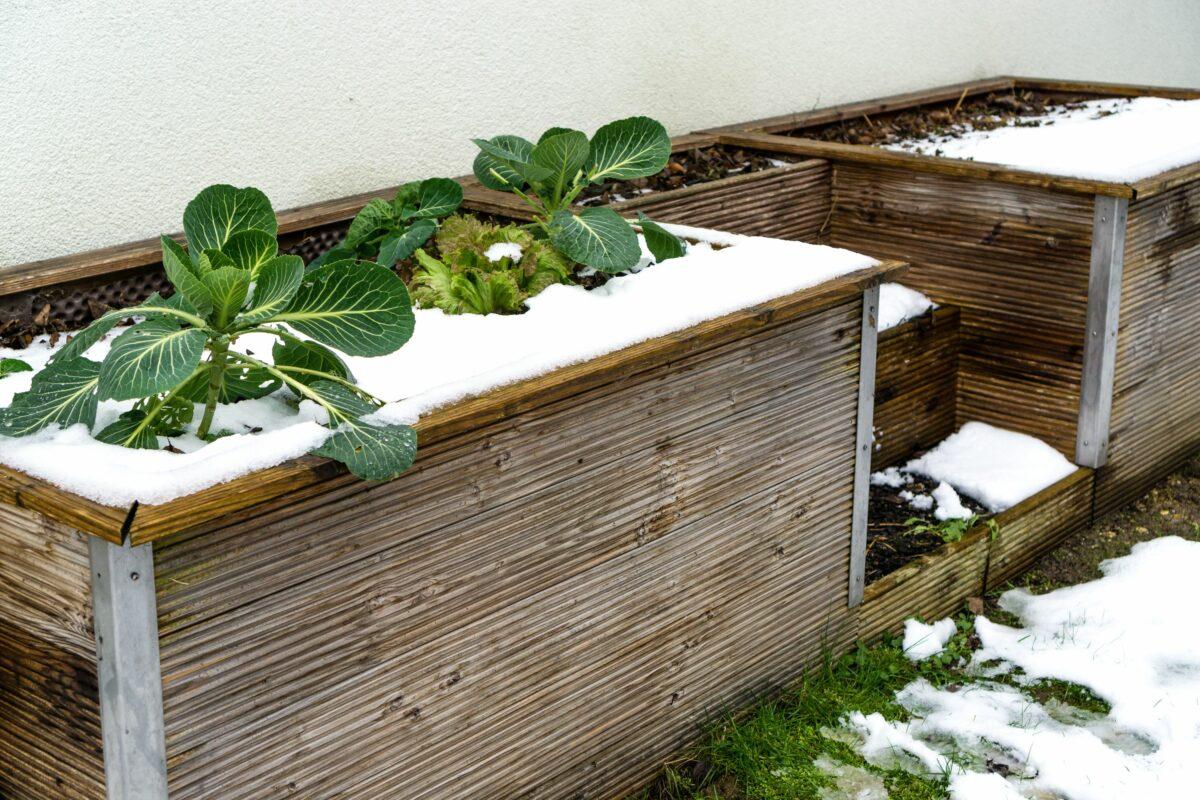Did you know? Snow insulates your raised bed and can be left on the ground. IMAGE: Ⓒdima_pics | Stock.Adobe.com
Your raised bed’s blooming and fruiting season is over – but there is still work to be done. Learn how to prepare your raised bed for the (Central European) winter.
Four options for your winter raised bed
#1 Cold hardy vegetables can be sown now
Winter vegetables are primarily leafy vegetables and brassicas. If you want to harvest them in the winter, the best time to plant them is in the fall. Suitable vegetables include:
- Lamb’s lettuce
- Endives
- Green Cabbage
- Brussels Sprouts
- Kohlrabi
- Parsnips
- Winter spinach
- Winter onion
#2 Leave winter-hardy herbs in the bed
There are also perennials and herbs that are hardy enough to simply stay in the raised bed. These include sage, rosemary, and thyme. According to Plantura, a direct-to-consumer gardening company, you should not cut shoots for harvest during this time because they are “entry points for frost and pathogens. You should only pick individual leaves at most. A cover is also useful.
#3 Cover the raised bed for the winter
A cover is ideal for protecting your raised bed plants in the winter.
Suitable are:
- Garden fleece
- Jute
- Leaves
- Brushwood
- Pine branches
- Snow also protects the bed from ground frost. But if the snow is on the cover, you should remove it due to the weight.
- Some also come with a glass cover that helps the plants grow even when the sun is barely shining.
Important: Plants should not come in direct contact with the winter cover as condensation can damage them. Also, the plants must continue to be ventilated despite the cover.
#4 Create a new infill with mulch and compost
Another option is simply refilling your raised bed so you can enjoy nutrient-rich soil in the spring.
- Remove all plant debris, weeds and roots.
- Fill the bed with ripe compost.
- At the first frost, cover the bed with mulch, such as spruce or fir twigs, to start the decomposition process.
Next spring, remove the mulch, add a layer of fresh soil, and start the next year’s gardening!




